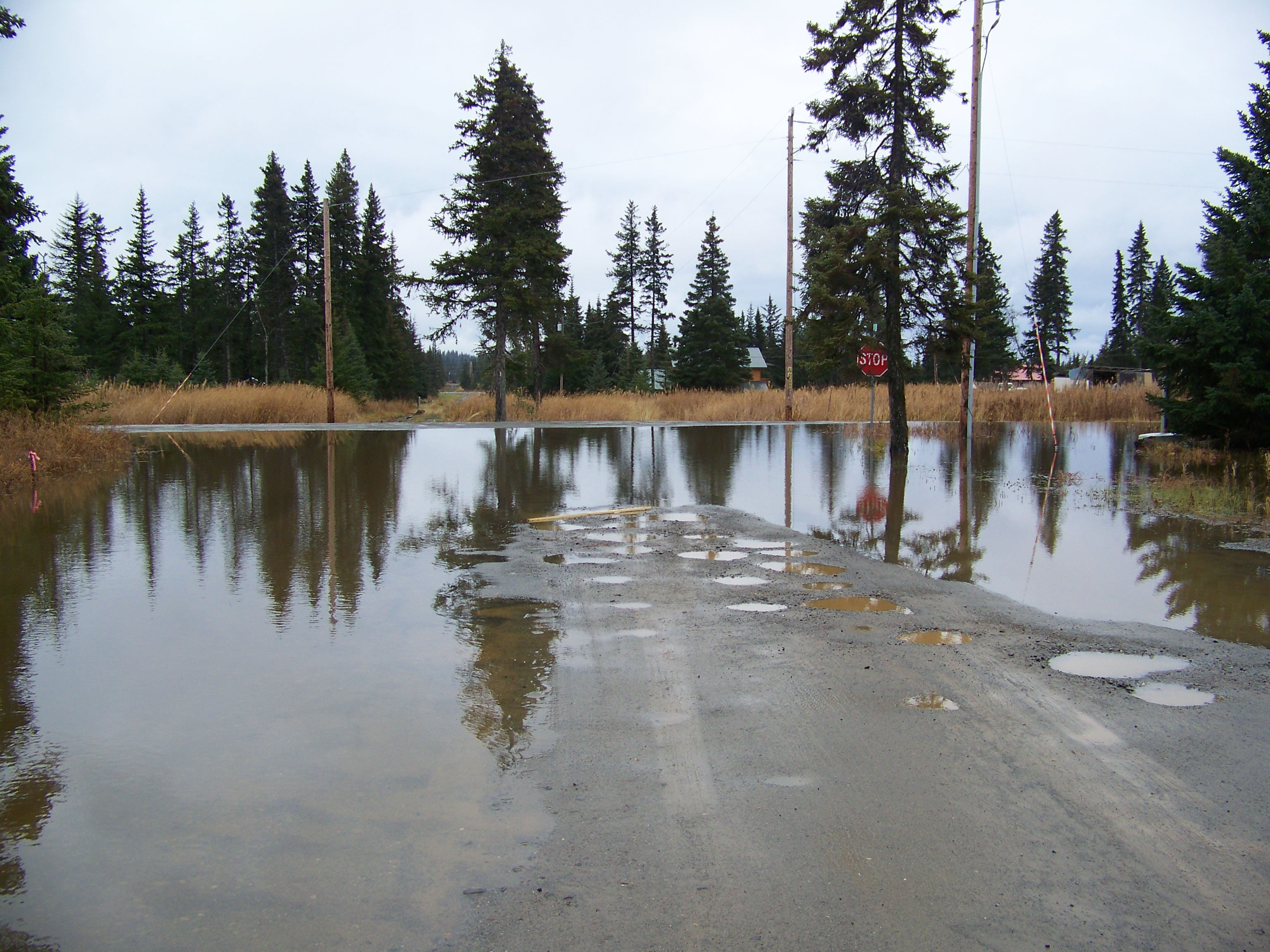If you’re looking for the Anchor Point intersection of Ester Avenue and Birch Street, you won’t find it. It’s underwater.
Continuing rain has saturated the ground north of the residential area. In spite of houses and streets that may be in its path, the water is trying to work its way downhill on a journey to the Anchor River. Only problem is, Ester Avenue — a gravel, borough-maintained, culvert-free street — is in the way, creating a dam and causing the water to back up around houses on either side of the intersection.
“Lakefront property,” is how 93-year-old Courtney Goesch describes the transformation that’s taken place around his home. Water surrounds three sides of his single-story, ground-level house. The gravel driveway connecting the house to Ester Avenue is barely above the water’s surface.
Goesch, who has lived at this location for seven years, remembers when a culvert used to help water find its way under and to the south side of Ester Avenue. When homeowners complained that basements and crawl spaces of residences south of the intersection were flooding, the culvert was removed.
Last month, when rain once again caused water to begin backing up at the Ester-Birch intersection, friends and neighbors installed a pump to decrease the rising water level. They pumped the water to the south side of Ester, which was good for Goesch, but not good for those living to the south.
“People below complained, so they took it out,” said Goesch of the pump’s removal.
In the past three months, the soaked ground has forced Goesch to have his septic tank pumped three times. His calls to the Kenai Peninsula Borough, asking for help, have “run up quite a phone bill,” he said.
The top of a Homer Electric Association junction box located at the corner of Ester and Birch can barely be seen above the water.
“We are aware to that situation and are keeping an eye on it,” said HEA spokesperson Joe Gallagher. “The equipment is waterproof, but we definitely don’t want it to be covered up by water.”
Pat Malone, director of the borough’s road service area, was on site Thursday, meeting with a local road inspector, a surveyor and a construction contractor to develop a method for diverting the water. The plan is to create a 1,200-foot channel to the north, with Malone having secured a drainage easement from Patsy Coleman, a property owner who lives out of state. Once complete, it will allow water to flow away from residences and toward an existing creek. Work on the ditch was to begin Friday morning.
“I think this will mitigate some of the flow to Ester, but I don’t think it will eliminate it,” said Malone. “Trying to ditch water and make it go somewhere is really difficult.
Between now and next spring, Malone will work on a plan to improve drainage in the area south of Ester.
As the road service area director, a job Malone has had since November 2012, his role is to safeguard borough roads, not homes. With the rising water submerging the Ester-Birch intersection and water beginning to run across Ester, the need to take action has become a priority. If it helps Goesch and others who live in the area, so much the better.
“I don’t want to sound callous because I’m not, but my function is to make sure we have functional roads that are passable,” said Malone. “But if I can mitigate other problems along the way, I’m happy to do so.”
Aware of past flooding in nearby neighborhoods, Malone is eager to “do not harm. I don’t want to just take a problem and relocate it.”
In the kitchen of what Goesch calls his “cottage by the lake,” he also knows from past experience that, if not done correctly, moving the water out of his yard can cause problems for others.
“I think I have a little more serious problem right now, though, because I’m the one in the water,” he said.
McKibben Jackinsky can be reached at mckibben.jackinsky@homernews.com.


